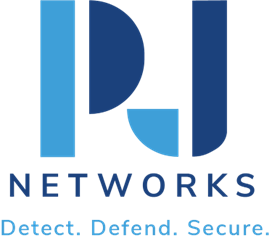Top 10 NOC Best Practices Every Organization Should Follow
In the ever-evolving world of network management, adopting effective NOC best practices is essential for optimizing network performance and ensuring robust cybersecurity. Today, I want to share with you these invaluable practices to enhance your organization’s network operations. Let’s dive right in!
Introduction
Hey there! You and I both know that in today’s digital age, managing network operations is no walk in the park. A well-functioning Network Operations Center (NOC) is crucial to keep businesses running smoothly. With cyber threats always lurking, it’s critical to adopt the best practices for NOC optimization. So, what are these top practices? Let me walk you through them.
Best Practice #1: Proactive Monitoring
Picture this. You’re ahead of the game, solving issues before they even surface. How? Through proactive monitoring! This means consistently checking network performance in real-time and identifying potential threats or outages.
- Regularly scan the network for vulnerabilities.
- Use various data points to identify anomalies early.
- Minimize downtime by resolving issues quickly.
Best Practice #2: Automated Alerting Systems
You can’t always be glued to the screen, right? That’s where automated alerting systems come in. These systems notify you of issues the moment they arise.
- Set up alerts for network bottlenecks.
- Customize alerts based on severity.
- Ensure quick response to critical incidents.
Best Practice #3: Regular Network Assessments
Think of these as routine checkups for your network. Regular assessments help in identifying strengths and weaknesses in network infrastructure.
- Conduct comprehensive security audits.
- Assess performance metrics periodically.
- Adjust policies based on findings.
Best Practice #4: Robust Incident Management
Incidents are inevitable, but how you manage them makes all the difference.
- Develop clear incident response protocols.
- Document each incident to refine future responses.
- Continuously refine your strategy based on past incidents.
Best Practice #5: Comprehensive Documentation
I know documentation can be a drag, but it’s necessary. Authoritative records prevent misunderstandings and provide clarity.
- Maintain up-to-date network topology diagrams.
- Document incident responses and resolutions.
- Store vendors and hardware information.
Best Practice #6: Role-Based Access Control
Limit access to sensitive data based on roles. Why? Because not everyone needs to know everything.
- Implement least privilege access policies.
- Regularly update access permissions.
- Log access attempts for accountability.
Best Practice #7: Network Segmentation
This practice involves splitting your network into segments to control traffic and enhance security.
- Divide networks into smaller, manageable segments.
- Restrict internal traffic between segments.
- Protect sensitive data with more rigorous security.
Best Practice #8: Implementing Security Protocols
Stay ahead of threats by implementing strong security protocols.
- Adopt firewalls and intrusion detection systems.
- Use VPNs to protect remote access.
- Regularly update software and patches.
Best Practice #9: Performance Optimization Tools
What if I told you there’s treasure out there? Performance tools like load balancers enhance how your network performs.
- Utilize load balancing for efficient traffic flow.
- Choose tools that suit your network architecture.
- Continuously evaluate the effectiveness of chosen tools.
Best Practice #10: Continuous Staff Training
You and your team should always be in the loop. Continuous learning keeps everyone sharp and ready.
- Regularly update staff on new technologies.
- Conduct cybersecurity awareness workshops.
- Encourage certifications and further education.
Conclusion
And there you have it! Implementing these top 10 NOC best practices can significantly boost your organization’s network performance and cybersecurity. Begin adopting these strategies today to pave the way for a more secure and efficient network operation. After all, a little preparation goes a long way in the ever-evolving digital landscape.
